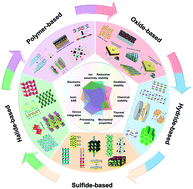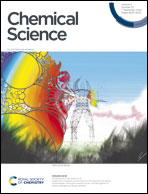Designing composite solid-state electrolytes for high performance lithium ion or lithium metal batteries
Abstract
Solid-state electrolytes (SSEs) are capable of inhibiting the growth of lithium dendrites, demonstrating great potential in next-generation lithium-ion batteries (LIBs). However, poor room temperature ionic conductivity and the unstable interface between SSEs and the electrode block their large-scale applications in LIBs. Composite solid-state electrolytes (CSSEs) formed by mixing different ionic conductors lead to better performance than single SSEs, especially in terms of ionic conductivity and interfacial stability. Herein, we have systematically reviewed recent developments and investigations of CSSEs including inorganic composite and organic–inorganic composite materials, in order to provide a better understanding of designing CSSEs. The comparison of different types of CSSEs relative to their parental materials is deeply discussed in the context of ionic conductivity and interfacial design. Then, the proposed ion transfer pathways and models of lithium dendrite growth in composites are outlined to inspire future development of CSSEs.



 Please wait while we load your content...
Please wait while we load your content...